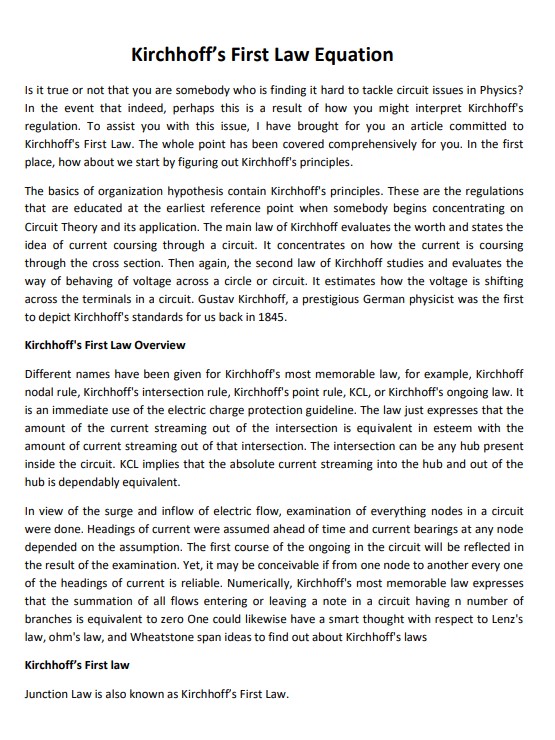Kirchhoff’s First Law in Circuit Theory
Summary:
Kirchhoff’s First Law, also known as Kirchhoff’s junction rule or Kirchhoff’s current law (KCL), is a fundamental principle in circuit theory. It states that the sum of currents flowing into a junction or node in a circuit equals the sum of currents flowing out of that junction. This law is derived from the principle of conservation of electric charge.
Gustav Kirchhoff, a German physicist, formulated these laws in 1845. Kirchhoff’s First Law focuses on current distribution within a circuit. It states that at any junction, the total current entering the junction equals the total current leaving the junction.
To apply KCL, the directions of currents at each node are assumed in advance, and the sum of currents entering the node is set equal to the sum of currents leaving the node. This equation helps solve circuit problems and determine unknown current values.
Using Kirchhoff’s laws, circuit analysis becomes more manageable, allowing for calculating unknown voltages and currents. The laws are particularly useful in solving complex circuits, where traditional analysis methods may be challenging. Kirchhoff’s First Law forms a crucial part of circuit theory and is essential for understanding and solving circuit problems effectively.
Excerpt:
Kirchhoff’s First Law in Circuit Theory
Kirchhoff’s First Law Equation
Is it true or not that you are somebody who is finding it hard to tackle circuit issues in Physics? In the event that, indeed, perhaps this results from how you might interpret Kirchhoff’s regulation. To assist you with this issue, I have brought you an article committed to Kirchhoff’s First Law. The whole point has been covered comprehensively for you. First, how about we start by figuring out Kirchhoff’s principles?
The basics of the organization hypothesis contain Kirchhoff’s principles. These regulations are educated at the earliest reference point when somebody begins concentrating on Circuit Theory and its application. The main law of Kirchhoff evaluates the worth and states the idea of current coursing through a circuit. It concentrates on how the current is coursing through the cross-section.


Reviews